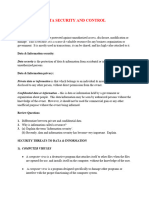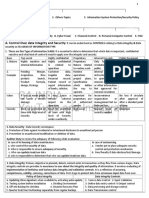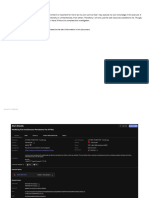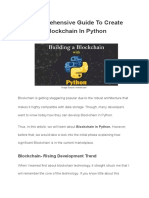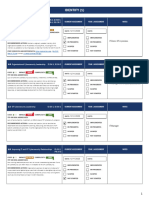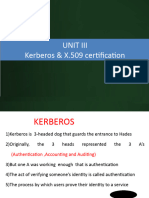0% found this document useful (0 votes)
40 views8 pagesData Security and Controls
The document outlines the importance of data security and control measures in protecting information from unauthorized access, modification, and destruction. It discusses core principles of data security, various threats such as viruses and hacking, and control measures to mitigate these risks. Additionally, it highlights the significance of privacy, non-repudiation, and the use of tools like antivirus software and firewalls to safeguard data integrity and confidentiality.
Uploaded by
mc.mashmelloCopyright
© © All Rights Reserved
We take content rights seriously. If you suspect this is your content, claim it here.
Available Formats
Download as PDF, TXT or read online on Scribd
0% found this document useful (0 votes)
40 views8 pagesData Security and Controls
The document outlines the importance of data security and control measures in protecting information from unauthorized access, modification, and destruction. It discusses core principles of data security, various threats such as viruses and hacking, and control measures to mitigate these risks. Additionally, it highlights the significance of privacy, non-repudiation, and the use of tools like antivirus software and firewalls to safeguard data integrity and confidentiality.
Uploaded by
mc.mashmelloCopyright
© © All Rights Reserved
We take content rights seriously. If you suspect this is your content, claim it here.
Available Formats
Download as PDF, TXT or read online on Scribd
/ 8





















